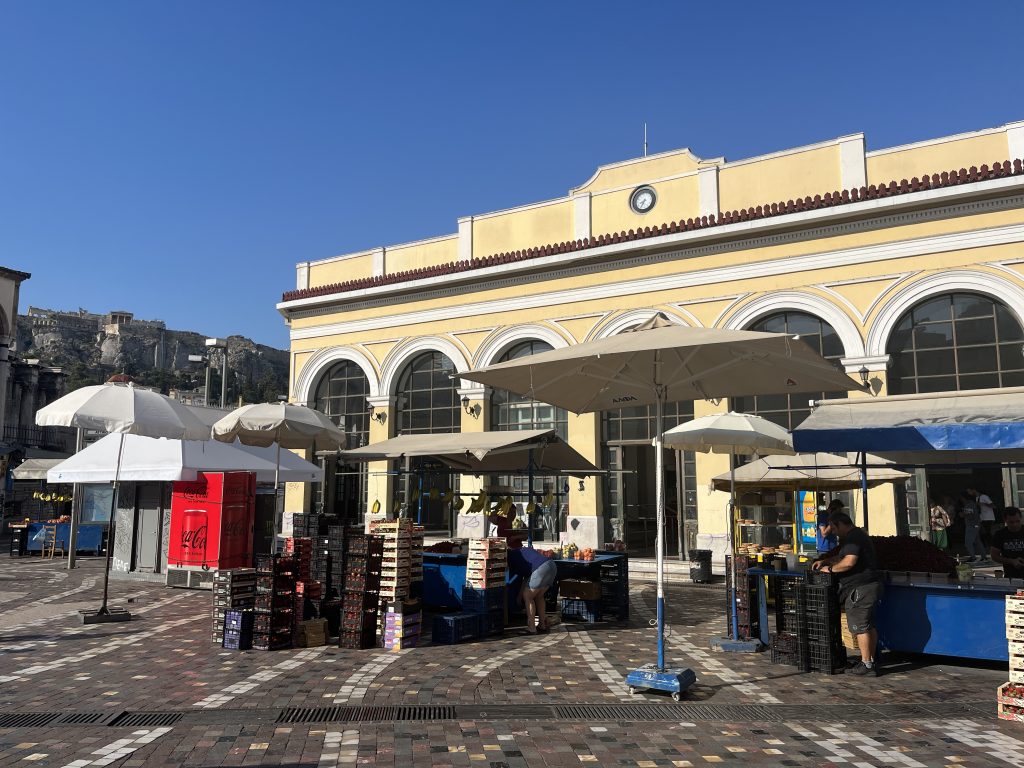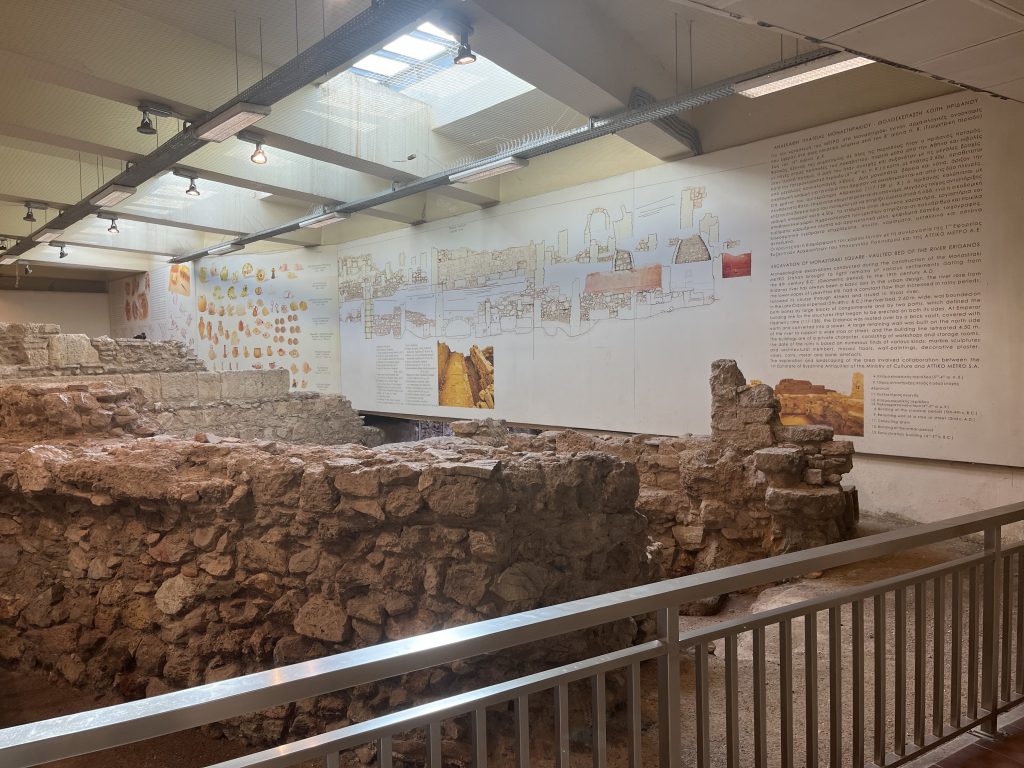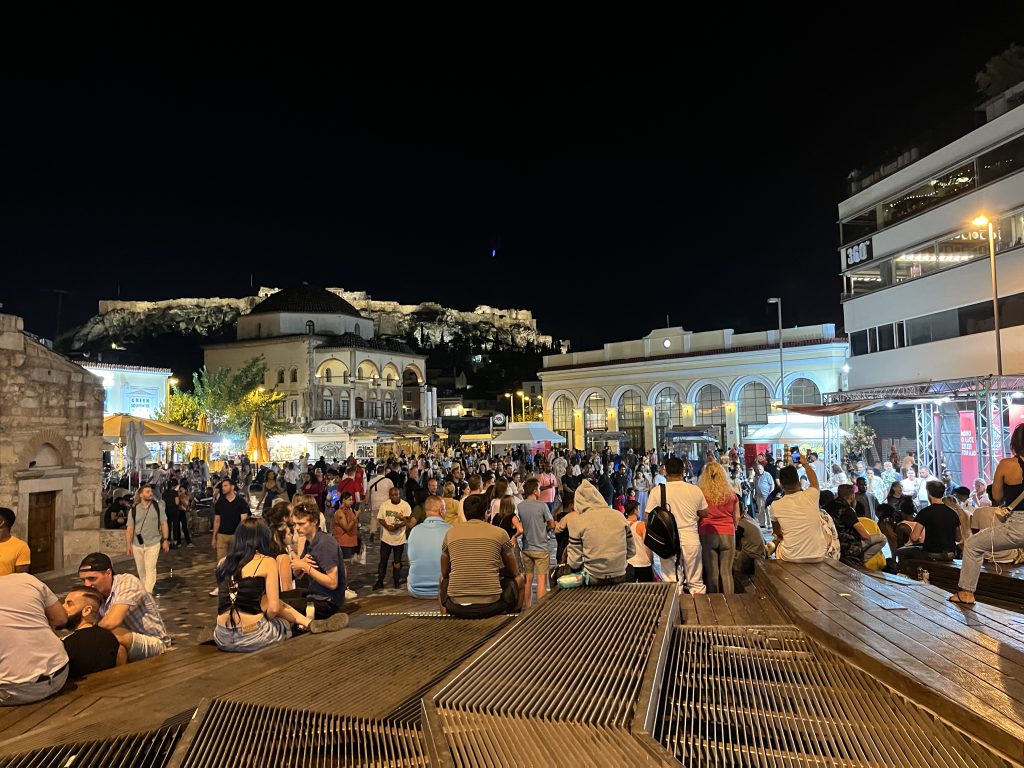
Digging holes in urban areas for rail transit tunnels and stations can unearth all sorts of challenges. But imagine doing so in a place like Athens, Greece, where thousands of years of the built environment can turn up at any scoop of the shovel.
Perhaps no station better exemplifies the challenges and beauty of digging through history then Athen’s Monastiraki Metro Station, located in the heart of the city’s bustling tourist center just north of the Acropolis. I had the chance to visit it this month and was struck by the archaeological site located literally within the station, with some artifacts dating back to the Bronze Age.

As Atlas Obscura described, the station sits on the ancient riverbed of Eridanos (called the “River of Hades” at the time). It was converted to a covered sewer under Roman emperor (and big Grecophile) Hadrian’s time. The ruins today are primarily from private buildings like workshops and storage rooms, dating as far back as the 8th century B.C.
The station itself was one of Athens’ main train stations for many years, and when Greece joined the European Union, the EU provided funding to transition it into the station you see today.

Of course, Athens is not alone in these Earthly challenges. Rome’s metro system has famously dealt with digging through archaeological sites for years. Los Angeles Metro Rail also found thousands of years of Native American history (including a village site by Union Station) plus Ice Age burials, particularly near the La Brea tar pits on the new Wilshire extension.
But for me the experience of feeling like I was visiting a museum at the same time I was at a Metro station was a new one. Kudos to Athens Metro for incorporating this history into the rider experience!


